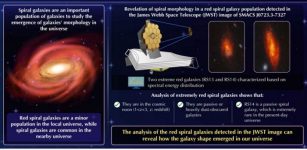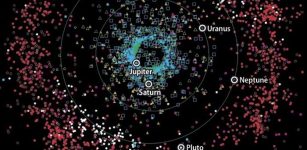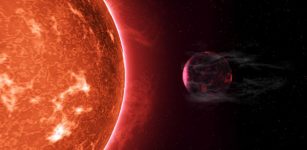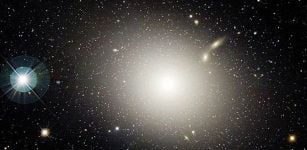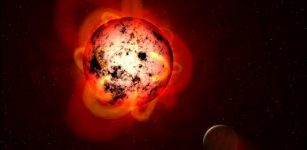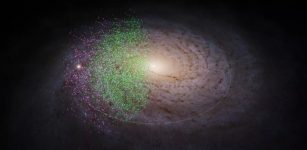Rotation Of Cloudy ‘Super-Jupiter’ Measured By Hubble
MessageToEagle.com – For the first time, a team of astronomers using NASA’s Hubble Space Telescope has measured the rotation rate of a massive exoplanet by observing the varied brightness in its atmosphere.
“The result is very exciting,” said Daniel Apai of the University of Arizona in Tucson, leader of the Hubble investigation. “It gives us a unique technique to explore the atmospheres of exoplanets and to measure their rotation rates.”
The planet, called 2M1207b, is about four times more massive than Jupiter and is dubbed a “super-Jupiter.” It is a companion to a failed star known as a brown dwarf, orbiting the object at a distance of 5 billion miles. By contrast, Jupiter is approximately 500 million miles from the sun.
The brown dwarf is known as 2M1207. The system resides 170 light-years away from Earth.

Hubble’s image stability, high resolution, and high-contrast imaging capabilities allowed astronomers to precisely measure the planet’s brightness changes as it spins. The researchers attribute the brightness variation to complex clouds patterns in the planet’s atmosphere.
The new Hubble measurements not only verify the presence of these clouds, but also show that the cloud layers are patchy and colorless.
Astronomers first observed the massive exoplanet 10 years ago with Hubble. The observations revealed that the exoplanet’s atmosphere is hot enough to have “rain” clouds made of silicates: vaporized rock that cools down to form tiny particles with sizes similar to those in cigarette smoke. Deeper into the atmosphere, iron droplets are forming and falling like rain, eventually evaporating as they enter the lower levels of the atmosphere.
At higher altitudes it rains glass, and at lower altitudes it rains iron and the atmospheric temperatures are between about 2,200 to 2,600 degrees Fahrenheit, explained Yifan Zhou of the University of Arizona.
This super-Jupiter is only about five to seven times less massive than its brown-dwarf host. By contrast, our sun is about 1,000 times more massive than Jupiter.
The super-Jupiter is so hot that it appears brightest in infrared light. The planet is hot because it is only about 10 million years old and is still contracting and cooling. For comparison, Jupiter in our solar system is about 4.5 billion years old.
The super-Jupiter completes one rotation approximately every 10 hours, spinning at about the same fast rate as Jupiter.
MessageToEagle.com
via NASA

